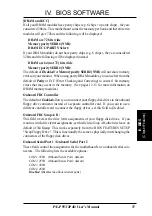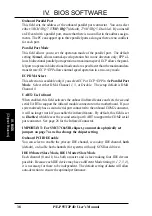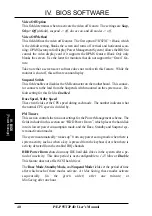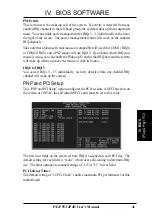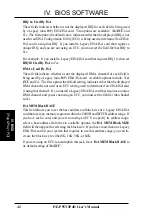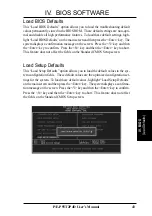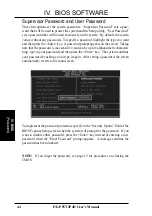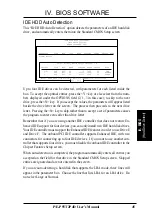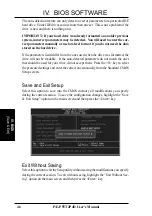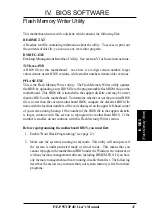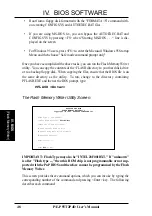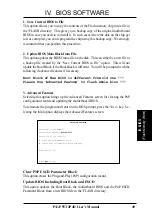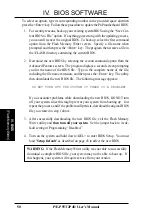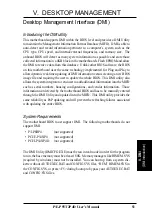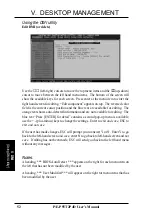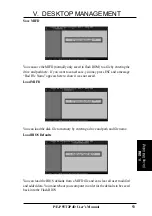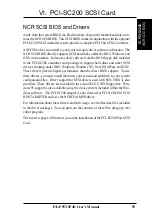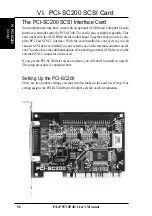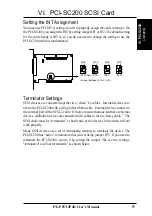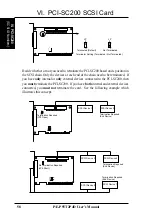
P/E-P55T2P4D User’s Manual
51
V. DESKTOP MANAGEMENT
Desktop Management Interface (DMI)
V
. DMI
(DMI Introduction)
Introducing the DMI utility
This motherboard supports DMI within the BIOS level and provides a DMI Utility
to maintain the Management Information Format Database (MIFD). DMI is able to
auto-detect and record information pertinent to a computer’s system such as the
CPU type, CPU speed, and internal/external frequencies, and memory size. The
onboard BIOS will detect as many system information as possible and store those
collected information in a 4KB block in the motherboard’s Flash EPROM and allow
the DMI to retrieve data from this database. Unlike other BIOS software, the BIOS
on this motherboard uses the same technology implemented for Plug and Play to
allow dynamic real-time updating of DMI information versus creating a new BIOS
image file and requiring the user to update the whole BIOS. This DMI utility also
allows the system integrator or end user to add additional information into the MIFD
such as serial numbers, housing configurations, and vendor information. Those
information not detected by the motherboard BIOS and has to be manually entered
through the DMI Utility and updated into the MIFD. This DMI utility provides the
same reliability as PnP updating and will prevent the refreshing failures associated
with updating the entire BIOS.
System Requirements
The motherboard BIOS must support DMI. The following motherboards do not
support DMI:
• P/I-P6RP4
(not supported)
• PCI/E-P54NP4
(not supported)
• PCI/I-P54NP4D
(not supported)
The DMI Utility (DMICFG.EXE) must be ran in real mode in order for the program
to run, the base memory must be at least 180K. Memory managers like HIMEM.SYS
(required by windows) must not be installed. You can boot up from a system dis-
kette without AUTOEXEC.BAT and CONFIG.SYS files, “REM” HIMEM.SYS in
the CONFIG.SYS, or press <F5> during bootup to bypass your AUTOEXEC.BAT
and CONFIG.SYS files.

